There are two types of travelers; those who plan and those who don’t. John and I are solidly in the second category. When we set off on a new adventure we tend to have a rough itinerary and places to stay. Beyond that we pack our bags using a “go anywhere, any time of year for any length of time with carry-on luggage only” packing list and head for the airport. I have a conscious policy of not setting expectations, preferring the surprise of discovery to the risk of being let down. John likes to live in the moment, trusts his ability to cope and happily accepts whatever comes his way. When we left for Rwanda last week to see the gorillas with our friends Chris and Doug Matson, it is fair to say that neither of us had thought much about the trip.
As we flew out of Nairobi I was vaguely nervous about Rwanda, my impression of the country having been set during the 1994 genocide where the Hutus brutally slaughtered a million Tutsis in 100 days of unfathomable violence. Given that level of devastation, how much progress was possible in 20 years? It turns out an amazing amount. Without commenting on whether Rwandan President Paul Kagame is a dictator using intimidation and death squads to stay in power or, as Bill Clinton described him, “one of the greatest leaders of our time,” Rwanda is transformed. Kigali tops the charts as one of the safest and cleanest African capitals. Littering is illegal (think Singapore), the infrastructure new and growing and if you ask anyone if they are Hutu or Tutsi they will respond “we are one.” We stayed overnight in Kigali in a sprawling red-brick hotel. The next day we visited the Genocide Memorial – a purposely blunt and disturbing reminder of the 1994 events — then set out for Rwanda’s Volcano National Park and the gorillas.
The Rwandan countryside was a beautiful surprise; steeply carved hills and valleys carpeted with terraced, small-holder farms. The deep red dirt is offset by neat green rows of potatoes, maize, wheat, cabbage, onions and cauliflower. Women and children walk along the roadways expertly (and impressively) balancing baskets, boxes, sugar cane, firewood, sacks of vegetables, suitcases, shopping bags and water jugs on their heads. I could easily envision a hut-to-hut hiking trek through this territory.
Volcano National Park rises up out of the fields on the Rwanda/Congo/Uganda border, its peaks shrouded in mist and slopes covered in dense, vine choked jungle. This is where we joined 74 other people at 7 am for our gorilla experience. [Forethought was necessary here to reserve slots, get permits and to know to bring things like gloves and gators to protect one’s skin from stinging nettles. Fortunately Doug is in the planner category and not only secured the permits but also brought along extra gators and found a store so that we could buy gloves, which we didn’t realize we needed.]
About 300 mountain gorilla live in 19 troops within Volcano National Park. Ten of the troops have been habituated to humans and are visited daily for one hour by 8 tourists, one guide, a security guard and two trackers. Unlike the Congo and Uganda, sightings in Rwanda are guaranteed because the trackers stay with the gorillas from dawn to nightfall and signal their GPS coordinates to the guides. We asked for a troop that required a two hour hike to reach and were assigned the Amahoro group; a troop of 19 led by a silverback named Ubumwe. We were warned that there would be a steep climb to reach this group and instructed to say 23 feet from the animals, not to eat or drink in their presence and to sooth them by repeating a guttural grunt.
The climb was as advertised; steep, entangled and booby-trapped with nettles. The gorillas…worth the effort. The 23 foot rule was impossible to follow as the first gorilla we saw came up the hill brushing past our legs as he chased off our porters and their offending walking sticks and back packs. Our trackers then hacked away the undergrowth and positioned us so that we were nearly in the gorillas’ laps. After exactly one hour, the gorillas and the guides signaled it was time to leave. We walked the first 100 yards up the trail with the gorillas. Then the gorillas turned right and disappeared into the brush while we turned left and headed down the mountain. There wasn’t much talking as we each absorbed the experience. It is fair to say that we were all, planners and non-planners alike, completely satisfied.
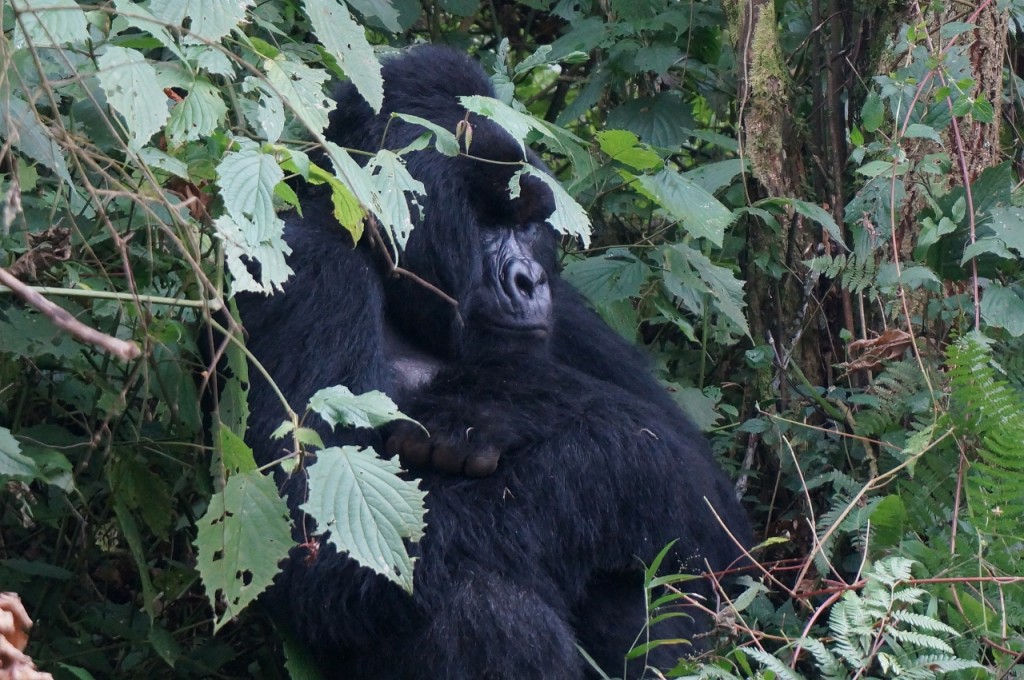
Number 2 silverback. He is the troop’s defacto leader as the #1 silverback is old and getting infirm.
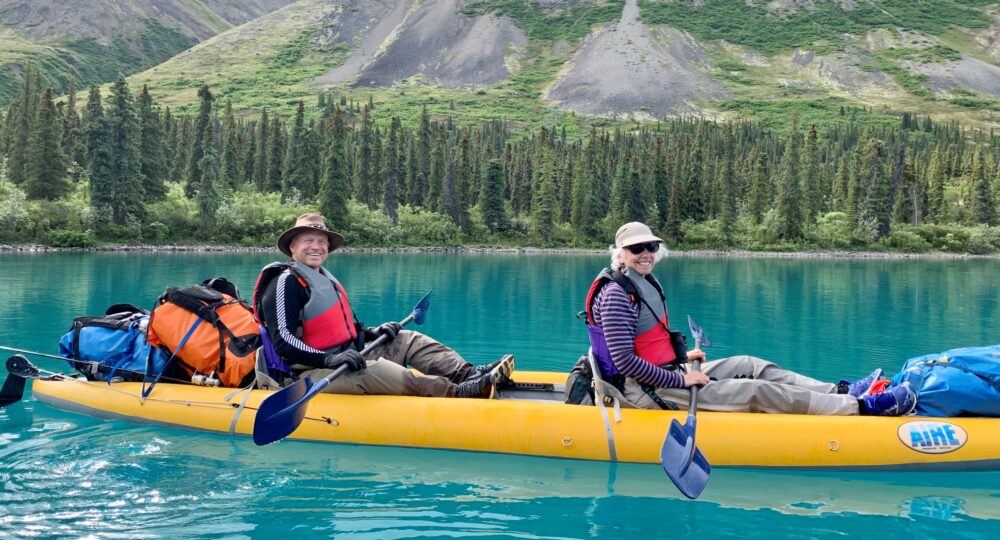
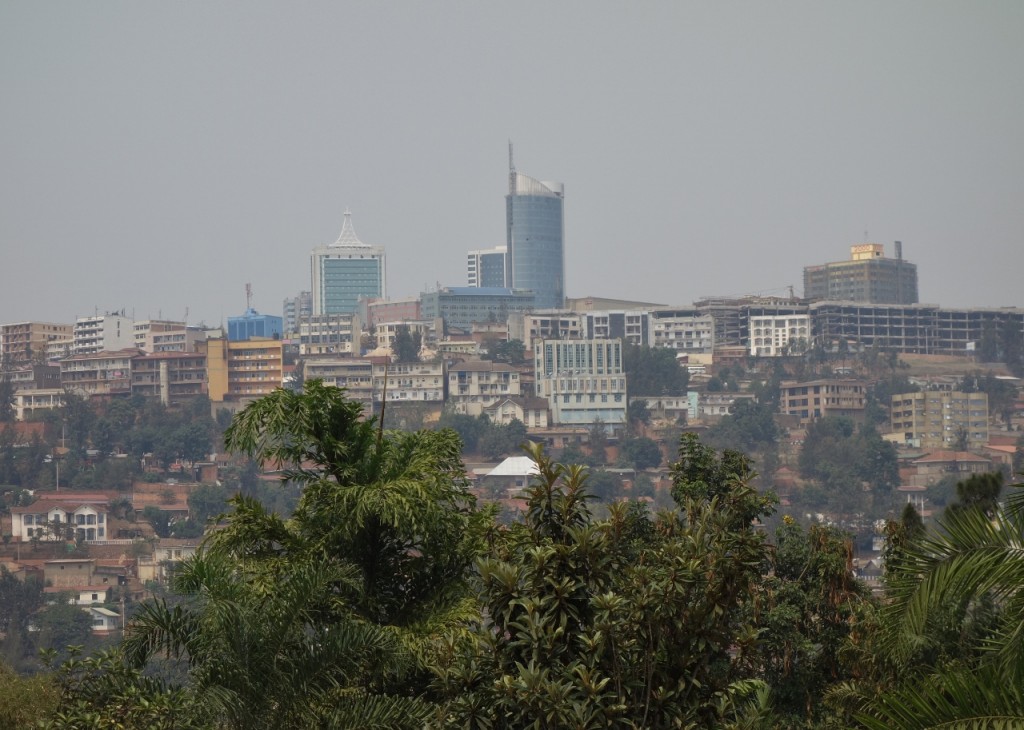
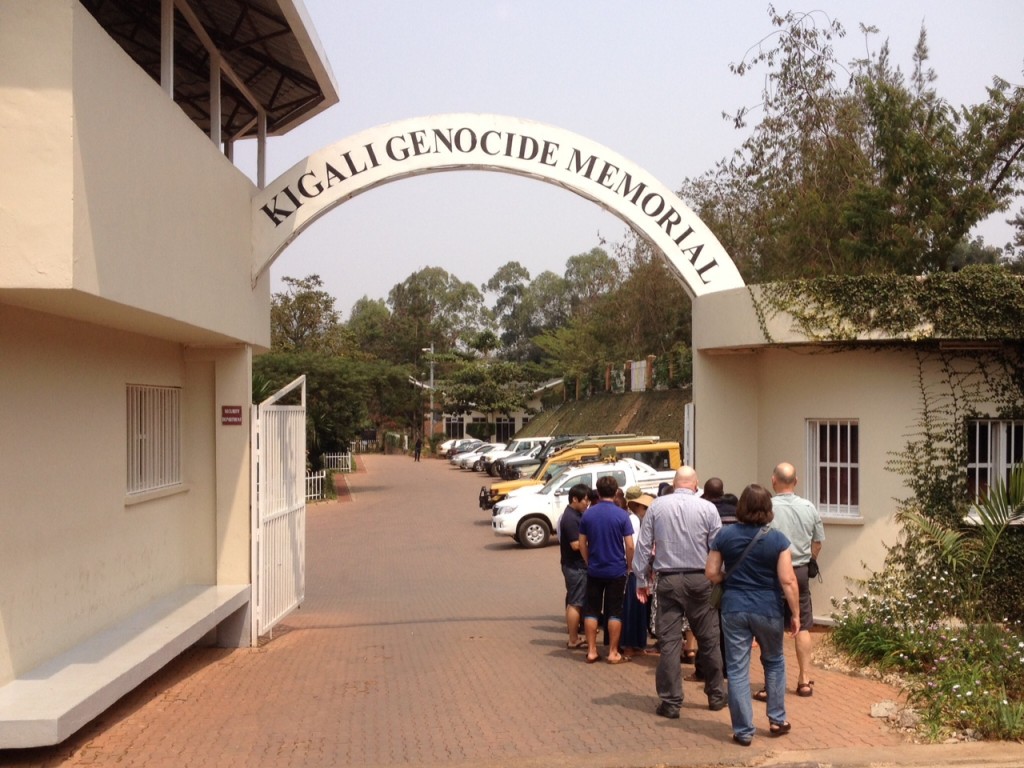
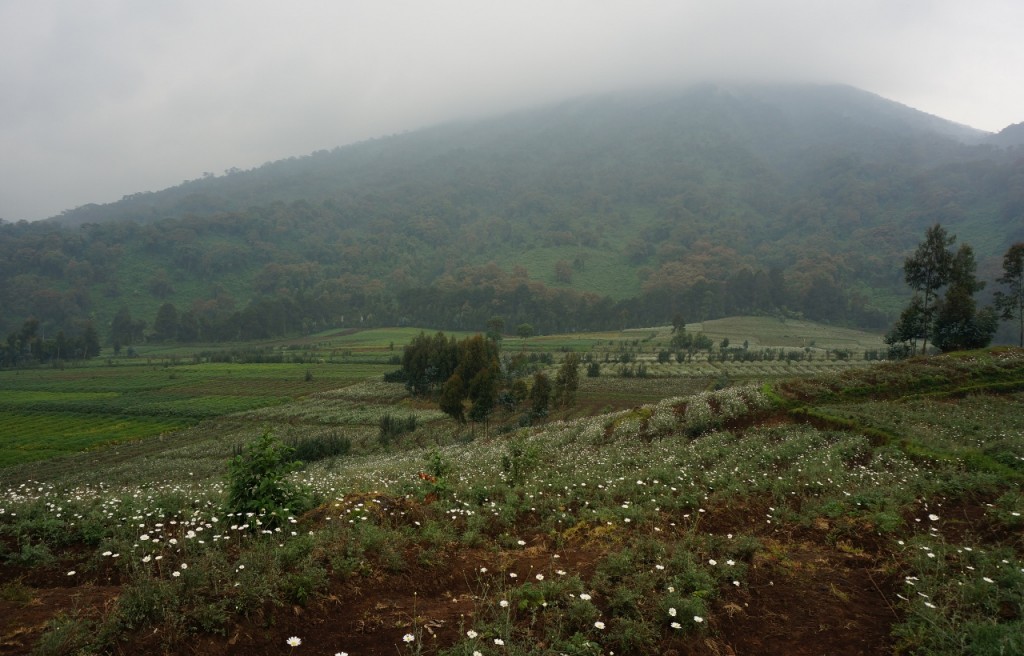
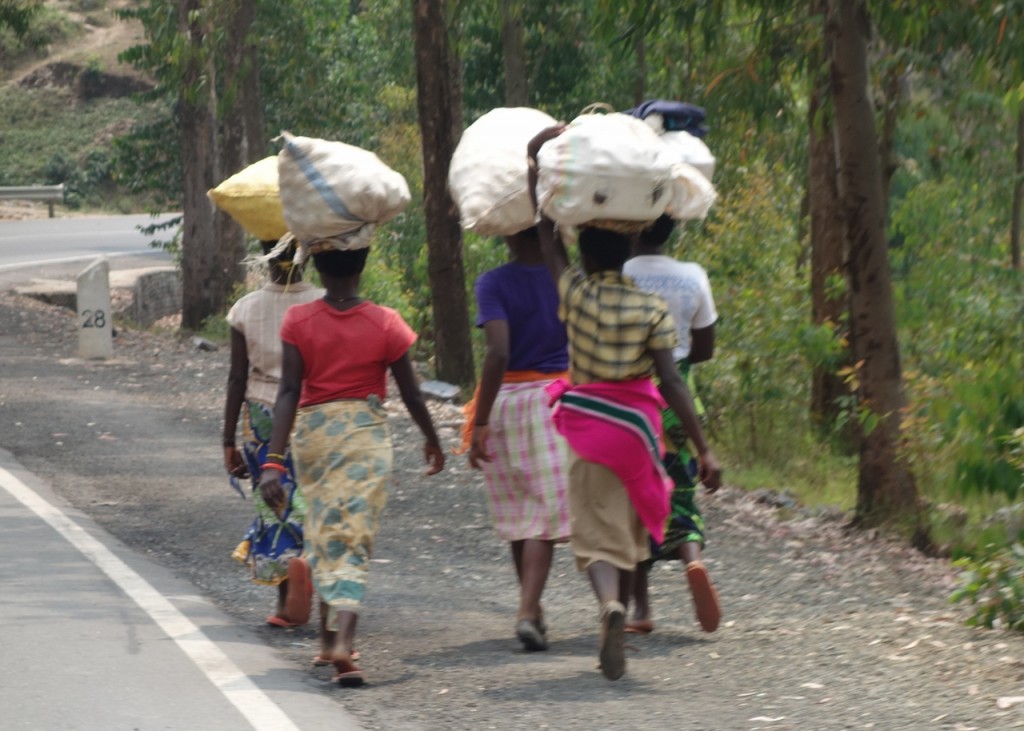
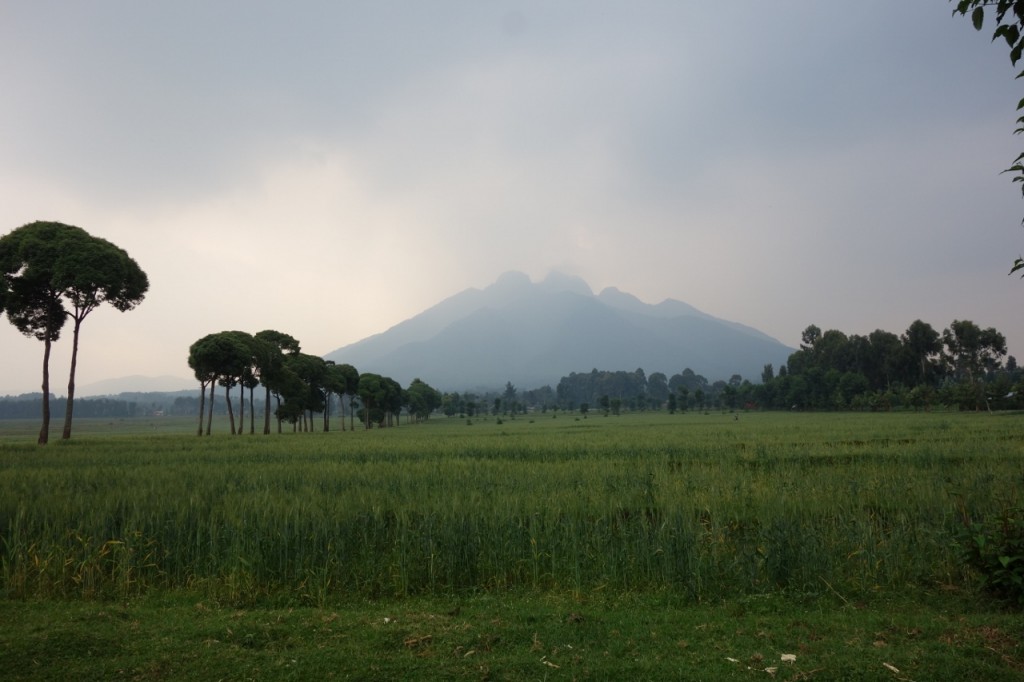
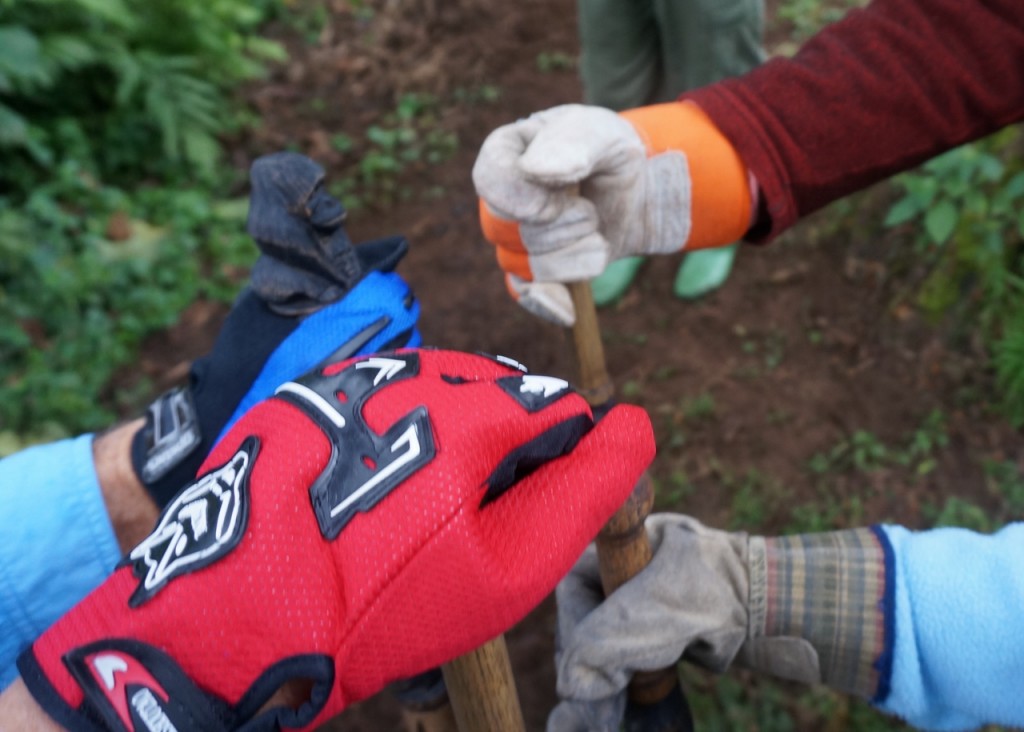
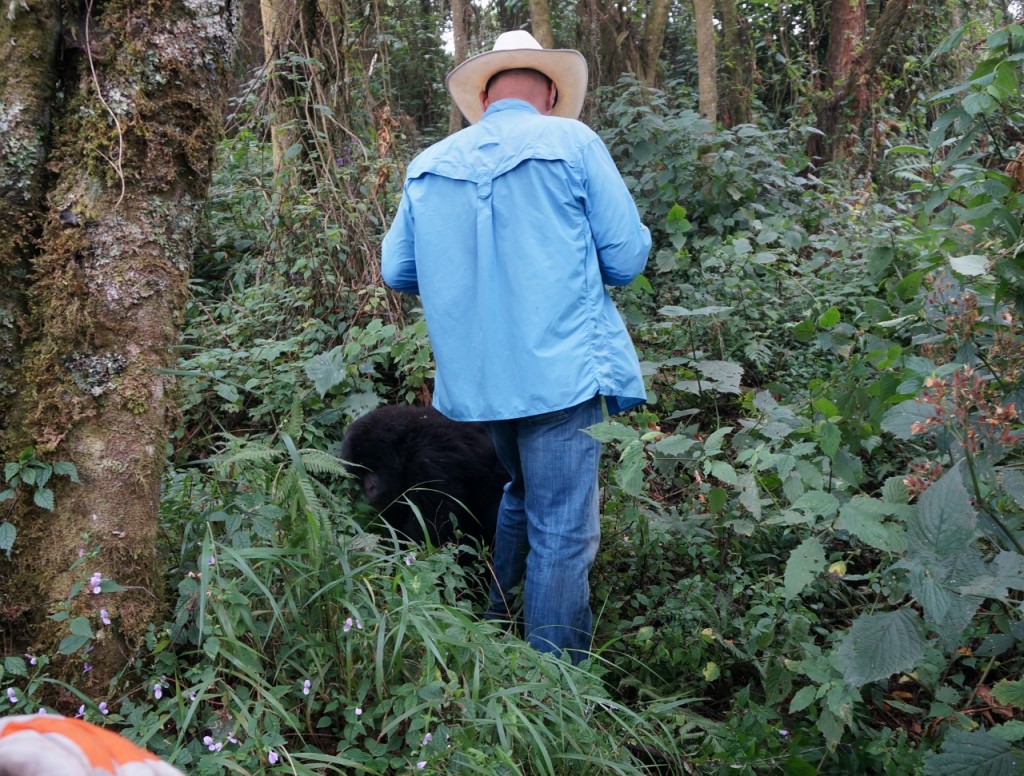
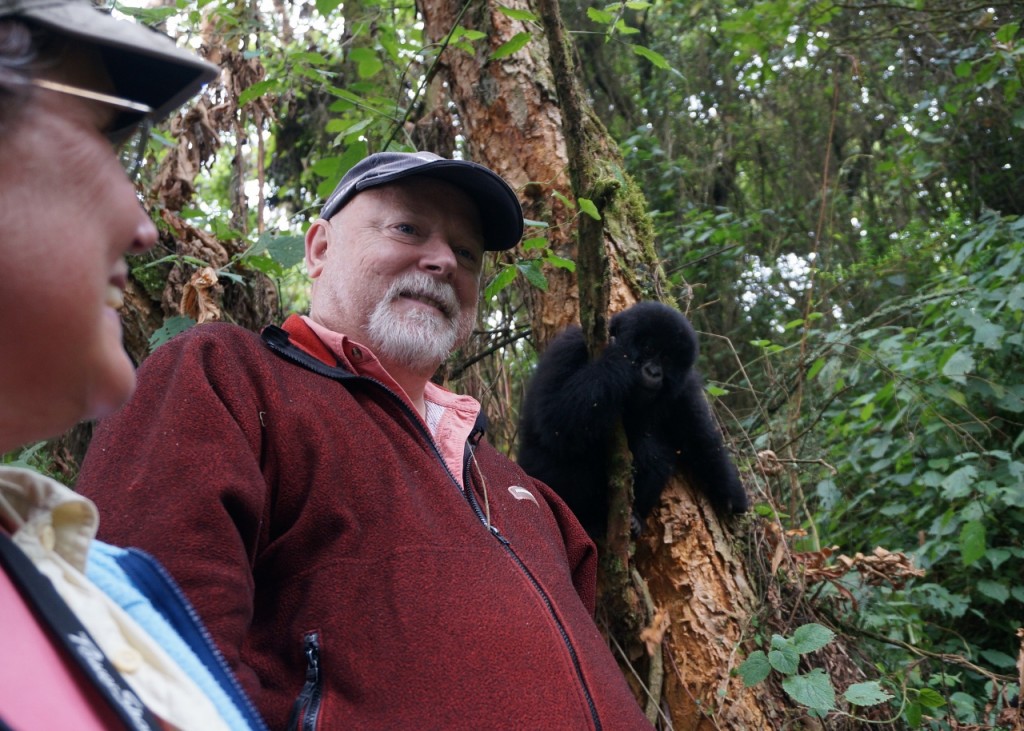
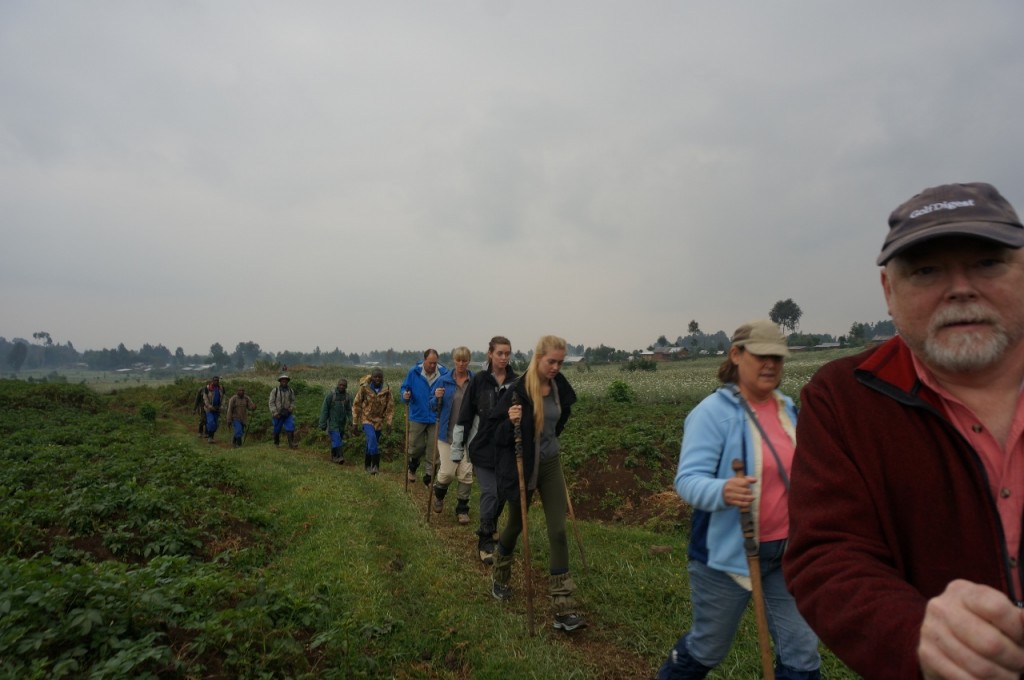
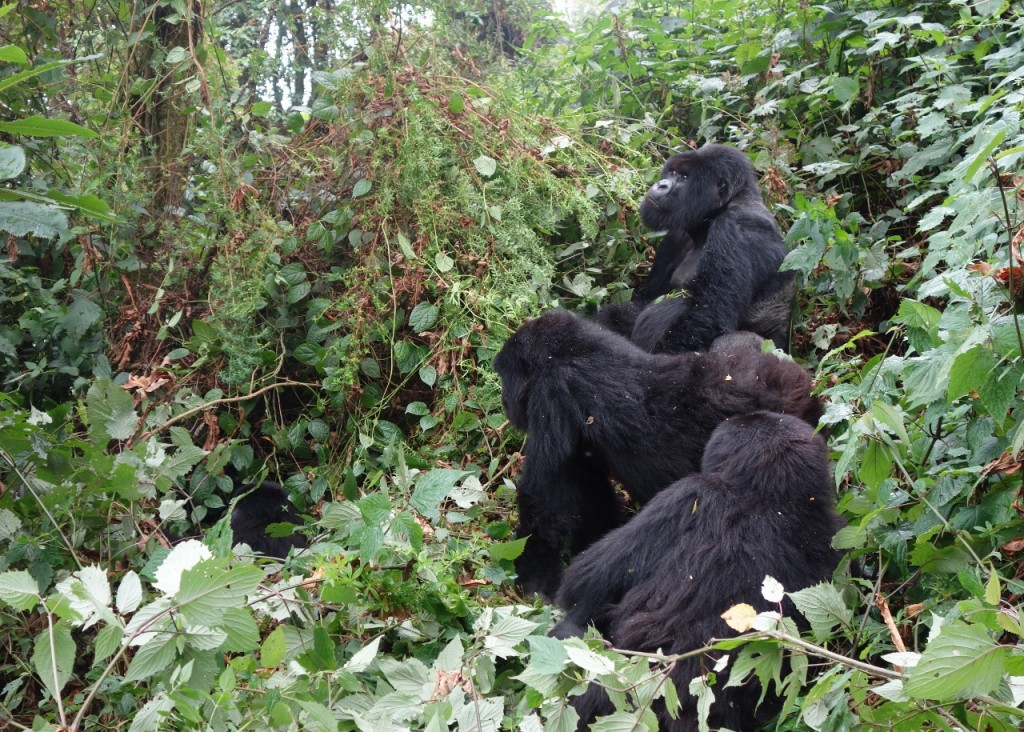

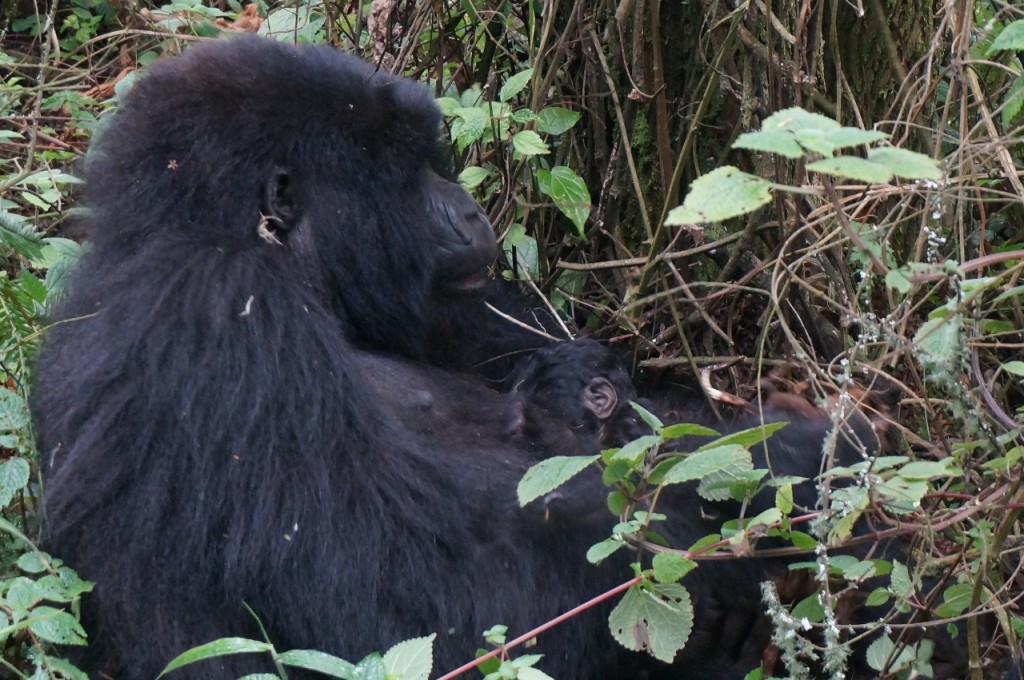
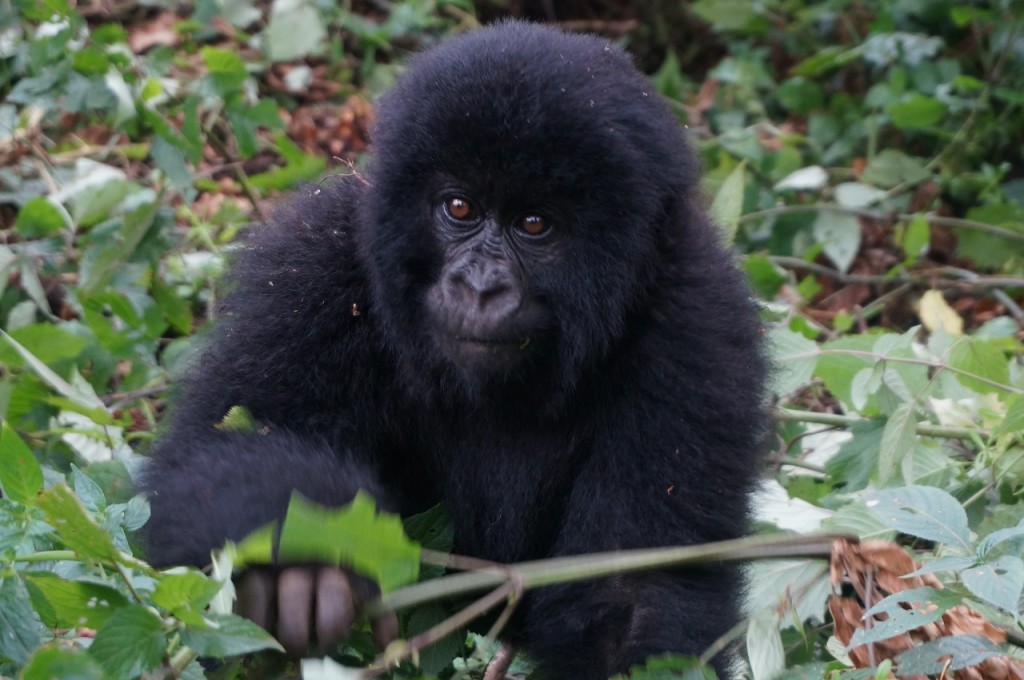
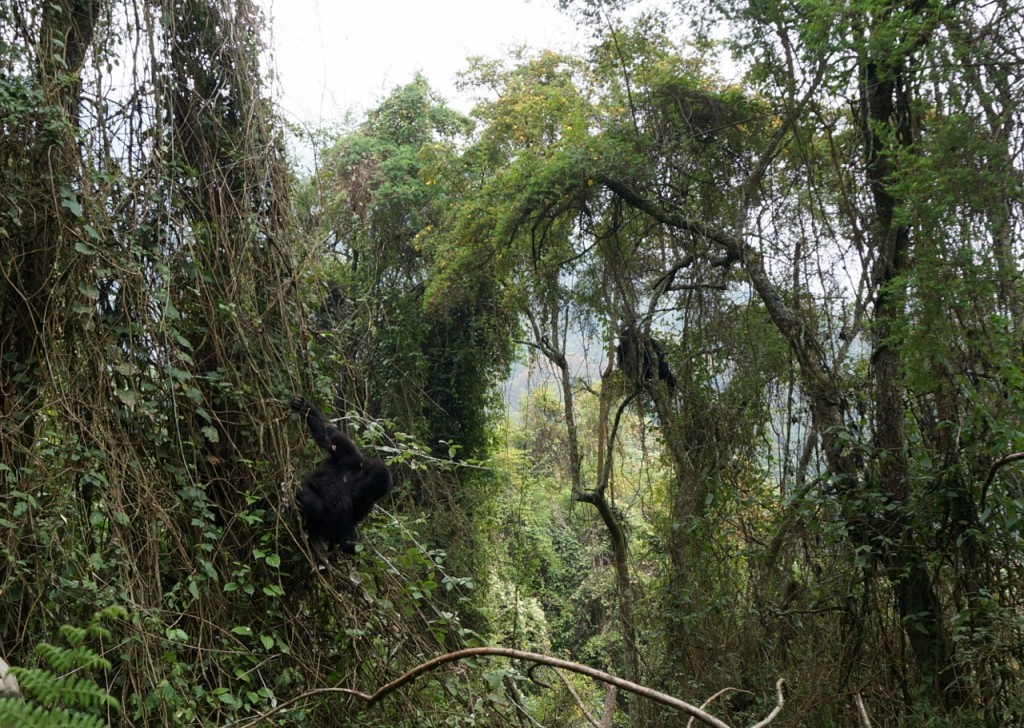
How cool is this?!? Glad you had the experience. Doesn’t sound like I would have made it with the hiking part!!
What a gorgeous looking place; incredible adventure guys!
The whole trip sounds amazing! This area appears to be quite different from Lewa. Green and lush, with cuddly looking animals.
I wonder who the number two silverbacks are in our lives…….
Oh, Anne, this is awesome. Love the storytelling, the photos, the whole experience sounds fantastic. Thanks for sharing.
Another great adventure. Thanks for sharing.